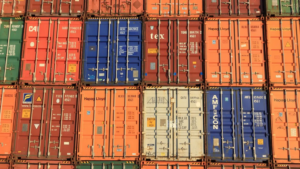With uncertainty surrounding Ukraine’s agriculture sector, increases in food prices could be on the horizon.
After the release of the latest USDA’s World Agricultural Supply and Demand Estimates (WASDE) report, concerns are growing due to the uncertainty of agricultural supply and demand conditions in Ukraine — with the expectation of fewer exports in wheat, corn and soybean.
The biggest concern though is due to the wheat supply, with global wheat supply expected to take a hit due to supply chain issues. Currently, the USDA predicts global wheat trade to be 3 million tons lower than usual, and Ukraine’s exports lowering from 1 million tons due to the closure of its Black Sea ports.
For countries that rely on Ukraine and Russia’s wheat exports, the lack of supply could result in increased prices of grains — which, for developing nations, might not be a problem. For developed countries, it’s a different story.
“Wheat doesn’t grow well in tropical regions, but luckily, most developing nations don’t rely on grains as part of their diet,” says Anthony Leddin, a plant breeder with Valley Seeds. “The effect won’t be near as difficult in developing nations in comparison to those who have wheat as a main staple in their diet.”

The main concern due to issues in the grain trade from Ukraine and Russia, however, would be the effects on the bread market.
“Wheat is pretty unique in that it has gluten to produce bread,” Leddin says. “That’s what you would have to buy in the supermarket, and there’s nothing else that can really substitute for it — other cereals don’t rise like wheat bread.”
Primarily, though, Leddin says it’s possible to see crops like millet or sorghum come into play more as a staple cereal in diet, but this would be more used to make something along the lines of a porridge instead of a bread.
What’s more likely, he believes, is countries might not export as much as they would in a normal year to maintain and feed their own citizens.
“We saw in 2008, with the global financial crisis and food spike prices in India, that people in India were paying a larger percentage of their income towards accessing food than normal,” he says. “There was a lot of politics going on there. India’s main stance was they weren’t going to export their grains outside of India and would consume them locally first. That can have a big price effect on other grains.”
In this instance, Leddin believes if wheat prices were to go up, other cereal and crop prices might follow due to political decisions made by certain countries to feed their own populations first.
All in all, food price increases seem imminent.
“It’s not just Russia and Ukraine — we’re seeing fresh vegetable prices go up due to the lack of transport availability, causing an increase in the Western world,” he says. “Consumers are going to get that increase in price passed onto them.”
Read more about Ukraine at:
The Seed Business in Ukraine Goes on Despite Invasion
Market Update: WASDE Predicts Ukraine Exports Dive, Overall Grains Decrease Globally
For Limagrain’s Tatiana Henry, the Invasion of Ukraine Literally Hits Home
Russian Invasion Could Cut Ukraine Planted Acres in Half












